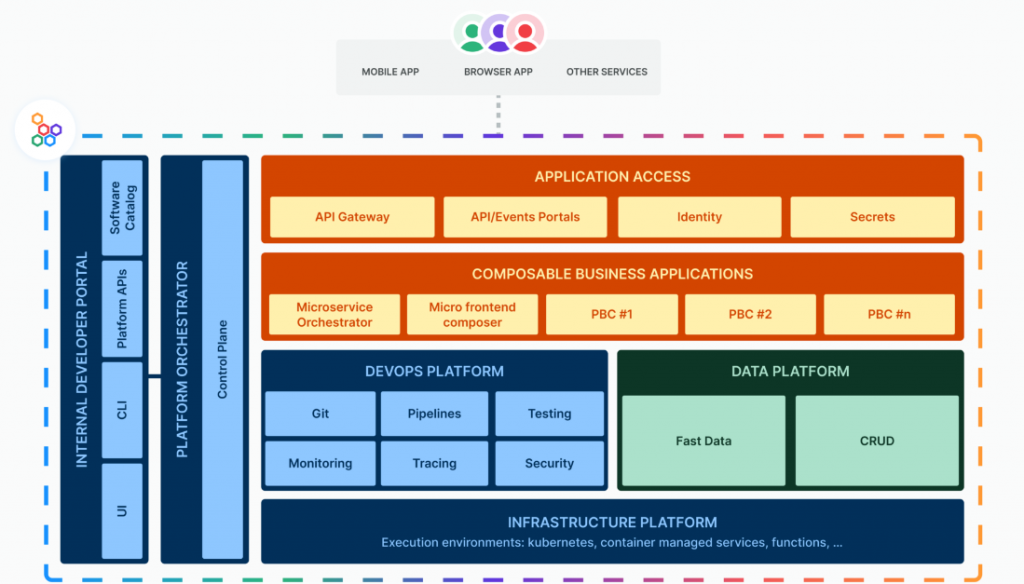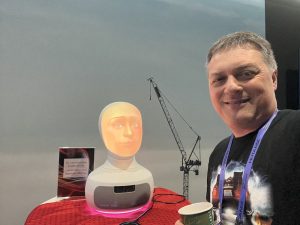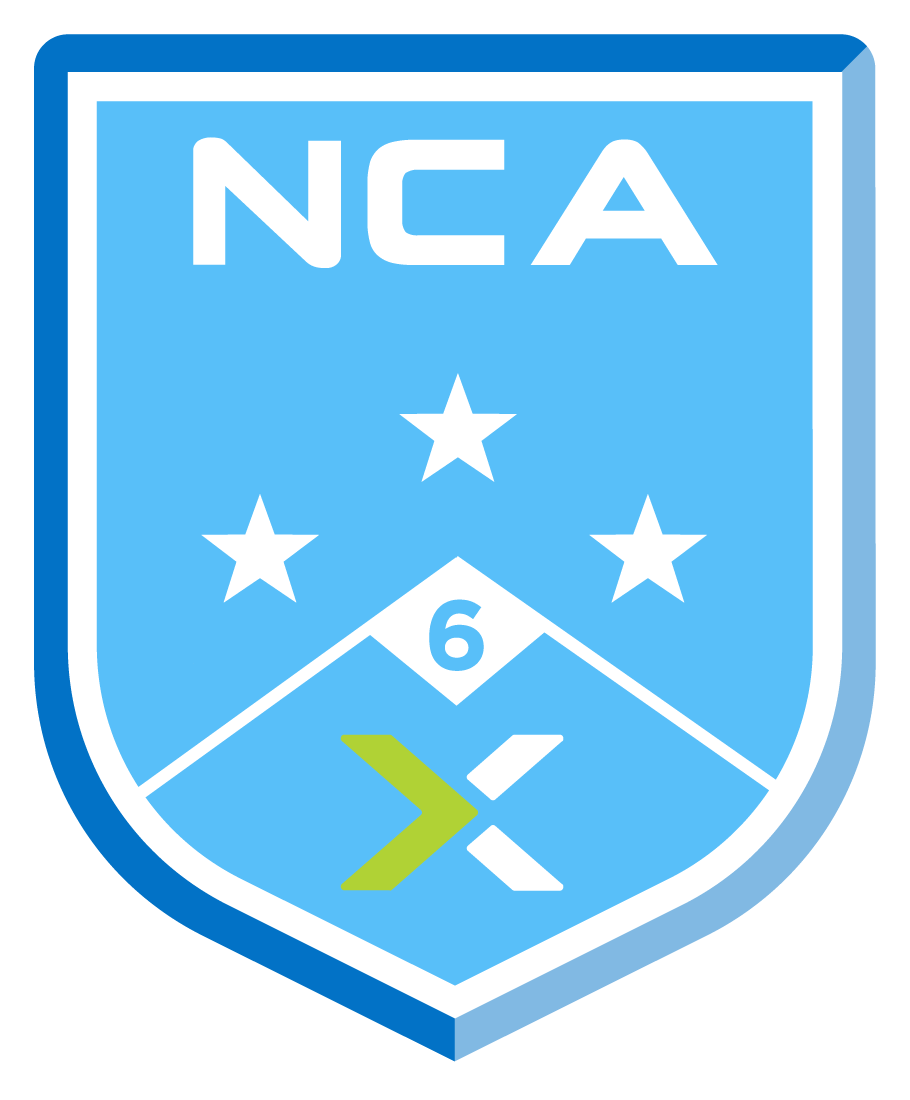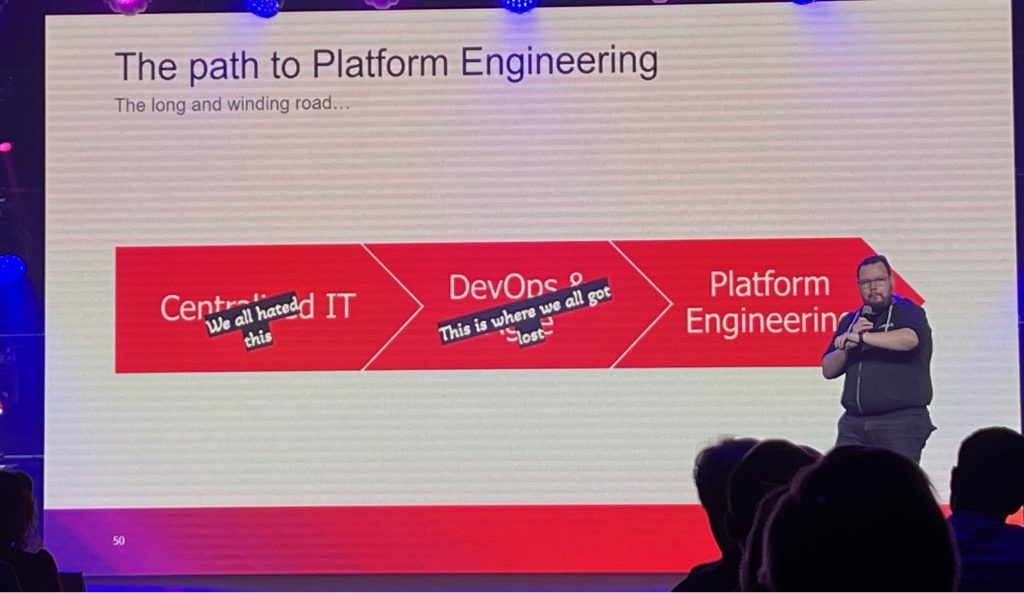From Platmosphere to Nutanix Next 2024: Two Exciting weeks for a Platform Engineer
Last month has been incredibly exciting! We embarked on a fantastic journey into new technologies and solutions, starting with infrastructure development on the hyper-converged platform with Nutanix and culminating in application development and deployment with Mia Platform.
While it may seem unusual to mix topics from these two distinct areas, there’s a fundamental connection between Nutanix and Mia Platform. Nutanix was the main sponsor of Platmosphere, and together, these technologies cover the entire DevOps stack: Infrastructure, Platform, and Software Development. This makes them a comprehensive full-stack solution.
Let’s see in depth!
Platmosphere: the best way to learn about Mia-Platform (15 May)

Mia-Platform is a dynamic, young company that started in 2016 with a single line of code. Today, it offers a powerful solution for managing infrastructure complexity in cloud-native application development.
As a member of the CNCF landscape, Mia-Platform stands out from other automation platforms that handle the development process on Kubernetes. Its low-code/no-code capabilities for data handling and a robust templating system significantly reduce development and deployment time, positioning it above other automation platforms.
In short, if you want to keep your developers focused on coding rather than infrastructure, Mia-Platform is an excellent solution to consider for your organization.
For more information, visit the official website: https://mia-platform.eu/
During Platmosphere held in Milan on the 15th of May, with the announcement of version 13 that introduces:
- Conversational DevX: a chatbot integration able to speed up the new user onboarding, use the new functionalities, and receive tips directly in the product.
- Frontend personalized IFrame: extend Mia-Platform functionalities including your custom frontend
For further check the official page: https://mia-platform.eu/it/v13-compose-your-platform/
Platform Engineering is finally taking-off!
How do you define an engineer capable of handling, interacting with, and integrating infrastructures, connectors, automations, software deployment, code, and more? A superhero?
This is a common misunderstanding from the past century: DevOps is a methodology, not a role. It involves continuously analyzing, compiling, testing, deploying, monitoring code, and more.
But what does it take to achieve this? How can we truly help developers improve their time to release and simplify the software authoring process?
Developers need an abstraction layer that allows them to develop and maintain applications without worrying about the underlying infrastructure. This is where a Platform Engineer comes in. They are responsible for enabling, abstracting, and automating all stateless and stateful infrastructure elements.
What’s “Nutanix”? The cloud building “block”! (Next 2024 20-23 May)
I discovered Nutanix when hyper-convergence was still more of an idea than a cluster implementation. In essence, a hyper-converged system is a software abstraction that consolidates all disks in a server into a scalable and high-performance storage pool for the computing instances running on those systems.

Today, hyper-converged systems are the fundamental building blocks of cloud infrastructure. This abstraction allows for linear scaling and increased capacity in terms of CPU, memory, and storage without the need to replace storage systems.
 At Next 2024 in Barcelona (https://www.nutanix.com/next), I and other vExperts had the opportunity to explore this technology and its roadmap. Concepts like AI Chat in a Box, Hypervisor, Hyperscaler, and a growing partner ecosystem, are crucial elements for remaining competitive in future challenges.
At Next 2024 in Barcelona (https://www.nutanix.com/next), I and other vExperts had the opportunity to explore this technology and its roadmap. Concepts like AI Chat in a Box, Hypervisor, Hyperscaler, and a growing partner ecosystem, are crucial elements for remaining competitive in future challenges.
Nutanix has always focused on two principal elements of the IT stack:
- Infrastructure: AOS, its Software Defined Storage, is one of the best solutions available in the market.
- Hypervisor: With Nutanix, you can choose the hypervisor that best suits your project, or you can use AHV, a robust virtualization system included in the Nutanix license. The Prism interface provides a comprehensive view of your infrastructure, from applications down to individual physical disks, enhancing your ability to manage and optimize your business operations.
NCA: Another certification achievement

During NEXT 2024, I had the opportunity to prepare for and take a certification exam. What better way to dive into technology than by starting with deep learning for a certification exam?
After some quick home preparation, a deep-dive class, and sitting for the certification exam, I earned my first Nutanix certification: NCA, a technical associate certification for those who want to understand how Nutanix clusters operate, where to find Prism elements, and how AOS (the Software Defined Storage component) works.
If you plan to achieve this certification I suggest taking a look at the official certification page: https://www.nutanix.com/support-services/training-certification/certifications/certification-details-nutanix-certified-associate-6_5#objectives
In conclusion…
Infrastructure and platform automation are just the beginning! Simplifying complex operations with automation is crucial for every company. Technology acquisition must be accompanied by the consolidation of methodologies, best practices, and organizational strategies. I must also mention the implementation of generative and predictive AIs, which are essential for maximizing the value of these technologies.
I am excited to continue working with both technologies and would like to thank Nutanix for giving me a deeper understanding of their hyper-converged solutions and ecosystem. I also appreciate the open channel with the community for sharing impressions and insights. Stay tuned!
Here are some Nutanix Next 2024 recaps:
- https://www.youtube.com/watch?v=6iMLsC2JPW0
- https://www.nutanix.com/blog/top-next-2024-news
- https://www.giovannidominoni.it/my-experience-at-nutanix-next-2024/

